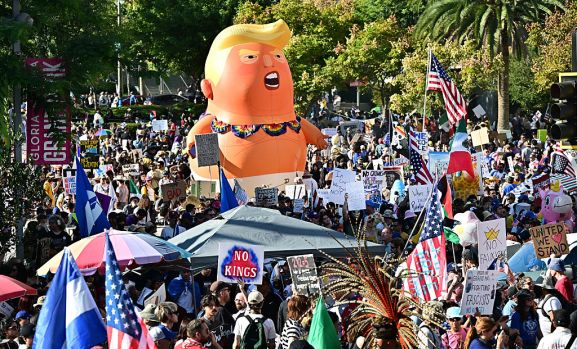On November 4, 2024, California voters will make a critical decision regarding Proposition 50, a redistricting initiative that could reshape the state’s congressional landscape. The measure, estimated to cost taxpayers as much as $200 million, is designed to counteract recent changes made in Texas, where redistricting was used to favor Republican candidates. Currently, polls indicate strong support for Prop. 50, with 57% of likely voters backing the initiative, according to an Emerson College Poll.
While it may appear that Prop. 50 offers a solution to California’s redistricting challenges, critics argue that it may actually exacerbate existing problems. The initiative follows a trend where voters opt for initiatives they believe are less harmful than the alternatives, even if the proposed measures have their own drawbacks. Notably, some supporters of Prop. 50 have expressed concerns, with 11% indicating they believe the mid-decade redistricting is a “bad idea,” despite their intention to vote in favor of the measure.
Redistricting Controversies in California and Texas
The push for Prop. 50 presents a stark contrast to California’s past approach to redistricting, which saw the establishment of an independent commission aimed at reducing political manipulation. Voters approved this independent commission in 2008, with the hope of creating fairer districts. Now, proponents of Prop. 50 argue that the commission’s role should be sidelined, suggesting that the initiative will better serve the state’s interests.
In Texas, the situation differs significantly. Redistricting is controlled by the Republican-majority state legislature, which has made aggressive moves to reshape congressional districts. Under pressure from former President Donald Trump, Texas Republicans redrew five congressional seats, ostensibly to favor their party. This included changes to districts with significant Latino populations, such as the 35th Congressional District near San Antonio, which is 57% Latino, and the 9th Congressional District in East Houston, which is 62% Latino.
Critics argue that Texas Republicans misunderstand Latino voting patterns. Although 48% of Latinos supported Trump in the 2024 election, this support may not translate to Republican candidates in upcoming races. Many expect that Latino voters will return to the Democratic Party, especially in response to the recent redistricting efforts.
The Future of Latino Representation
In California, where the Latino population makes up approximately 40% of residents, the implications of Prop. 50 could lead to a similar backfire as seen in Texas. Proponents aim to create new Democratic districts that would be majority Latino, but there are concerns that this strategy may alienate Latino voters who have shifted away from the Democratic Party. While they may not align with the Republican Party due to its perceived toxicity—particularly following immigration raids—they are becoming less predictable as Democratic voters.
The potential outcome of this initiative raises questions about the effectiveness of redistricting efforts. Critics suggest that both California and Texas are falling into a pattern where political elites manipulate district maps without genuinely engaging with Latino communities. Instead of relying on convoluted maps drawn by political strategists, a more effective approach could involve asking Latino voters about their needs and addressing those directly.
The fate of Proposition 50 will likely reflect broader trends in voter sentiment and political alignment in California. As the special election approaches, the decision will not only impact congressional representation but may also shape the political landscape for years to come.







